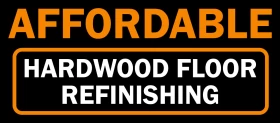Flooring makes up the central piece of your home; it beautifies your home significantly if it’s installed well and taken good care of. Naturally, anything that’s in use is prone to some wear and tear, in the same way wood flooring is prone to repair. For minor damage, DIY work is efficient; however, for more extensive issues, professional assistance is required for custom floor repair. In this guide, you will learn about the ways to get your wood floor repaired.
Patching the Damaged Wood Floors
At Affordable Hardwood Floor Refinishing, we specialize in providing top-tier wood floor repair services to a variety of homes, ensuring precision and perfection through each brushstroke. Whether there’s minor floor damage, such as scratches or cracks, or significant damage in the form of worn-out wood boards, we have you covered.
Let’s dive in to explore the essential steps that are involved in getting the wooden floor repaired through DIY methods.
Step 1: Assess the Damage:
The first step involves closely monitoring the area to identify the extent and type of damage to the wooden flooring. Once you’ve assessed the area, pen down the elements discussed below.
- Is the wooden floor damage limited to a specific area?
- What type of damage is it?
- What repairing method does it require?
- Could it be rectified using DIY methods or require professional assistance?
Once you’ve jotted down such elements and their answers, you need to move towards the next step.
Step 2: Gather Your Material: Time to Rock and Roll
Once you have decided what method would be required to repair the damage to your wooden floors, it’s time to keep all the needed materials handy.
The following is the generic list of items that you generally require for wood floor repair.
- Wood Filler: Choose a neutral color that matches your wood flooring and could be stained later.
- Putty Knife: For applying a coat of wood filling or staining.
- Sandpaper: A fine-grit sandpaper is required for sanding the filler and potentially the entire floor.
- Stain: Choose a stain that perfectly matches your flooring to achieve a refined look.
- Finish: Polyurethane or varnish is applied over the flooring for an extra finish.
- Cleaning Supplies: A tack cloth, a damp cloth, and a vacuum are required for cleaning purposes.
Step 3: Repair the Damage: From Prep to Finish
Now is the time to repair the damage entirely from scratch. In this step, there are three ways a damaged wooden flooring can be repaired.
Let’s have a look at the steps for repairing the wooden floor.
➔ Repairing Minor Damage: Scratches and Gouges
If you observe minor cracks or scratches in the flooring, take a neutral colored wood filler. Apply over the crack with the help of a putty knife. Sand it immediately, and then apply a refined stain over the surface, which is followed by the refinishing coat for a better appeal.
➔ Replacing the Damaged Boards
In case the boards from the wooden flooring are damaged, take off the damaged boards. Use new wooden boards of the same color, grain, and thickness, and glue them over the flooring. Then, sand and stain them thoroughly, followed by applying a protective finish.
➔ Refinishing Your Floor: Final Go-To Choice
If your old flooring isn’t damaged physically but is worn out, you need to get it completely sanded and stained to even out any imperfections. Later, apply a thick 2 to 3 coats of polyurethane varnish over the wooden surface for an enhanced appeal.
Conclusion
Repairing your wood flooring doesn’t have to be overwhelming. With the right tools, materials, and a step-by-step approach, even minor damages like scratches, gouges, and small cracks can be handled effectively with a DIY fix. Whether you’re patching a small area or refinishing the entire surface, the key lies in understanding the extent of the damage and choosing the appropriate repair method.
However, if the floorboards are severely damaged or you’re unsure about your skill level, it’s wise to seek professional help for a seamless and long-lasting result. At the end of the day, proper wood floor repair not only restores your floor’s natural charm but also extends its lifespan and adds value to your home. Whether you do it yourself or rely on experts, timely repairs can keep your floors looking fresh, polished, and beautiful for years to come. A well-maintained wood floor is always worth the effort.
FAQs
1: How to fix a crack in wood flooring?
A crack in the flooring can be fixed by using a wood filler on the cracks and then thoroughly sanding and staining it to match the original shades of the wood, giving a perfect finish.
2: Is it better to get a wood floor repaired by professionals or try DIY?
If there are minor cracks in your wood flooring, a DIY repair would work well. But if the floorboards are damaged enough, seek professional assistance.
3: Is DIY worth it for floor restoration?
Yes, DIY is worth it for floor restoration, especially when it comes to repairing minor cracks or scratches.
4: How to repair a wooden floor without replacing it?
You can repair a wooden floor by incorporating wood filler into the scratches with the help of a putty knife, then thoroughly sand and stain it to give off a perfect refinish.
5: Which glue is the best for wood flooring repair?
Polyvinyl acetate (PVC) is a glue that’s widely used for flooring restoration purposes, which is prized for its safety, affordability and strength.
